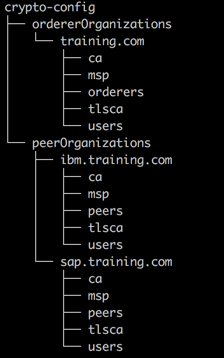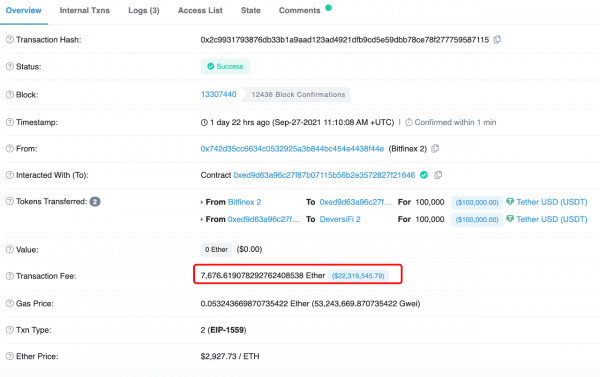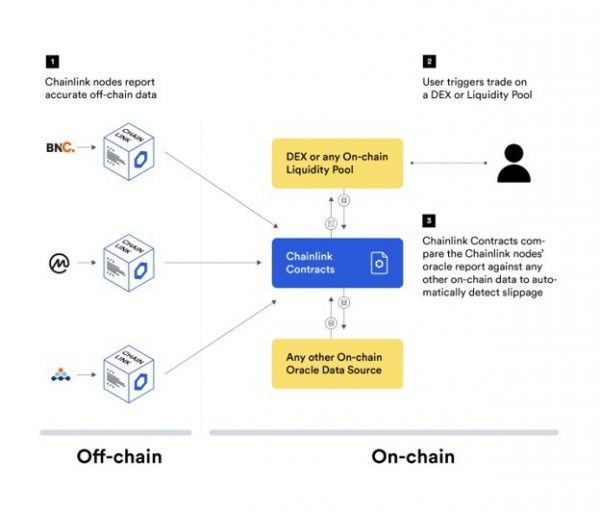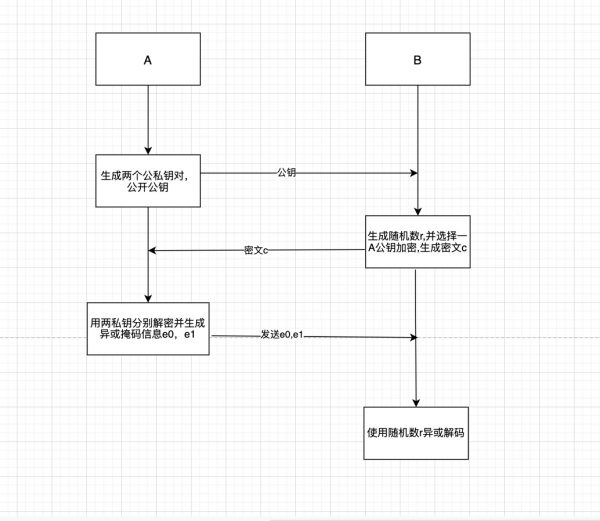[译]区块链上生成随机数
在区块链上如何生成随机数。
 ## 什么是随机数? 想象一下你身边的随机噪音或者任何随机发生的事情,可以说检测到这些随机模式的可能性为0。这就是随机数的意思 - 一个可以生成在指定范围内的任意不确定数字的模式。 当我这么说的时候,考虑一下1~100之间的某个数。由于不确定性,我猜不到你的脑子里现在想的是哪个数。 随机数是从某个特定分布中选中的数,通常也会要求这些数之间彼此独立, 这样在前后两个数之间就不会存在相关性。计算机生成的随机数有时会 称为**伪随机数**,这一术语中保留了**随机**,表示其不可预测性。当没有额外的约定时,通常随机数采样自均匀分布。当然也可以使用其他的概率分布, 例如,[Box-Muller变换](https://en.wikipedia.org/wiki/Box–Muller_transform)可以将一对满足均匀分布的随机数转换为一个二维正态分布。 ## 什么是伪随机数? **伪随机数**也被称为确定性随机位。这些数是使用被称为[**伪随机数发生器(Pseudo-Random Number Generators)/PRNG**](https://en.wikipedia.org/wiki/Pseudorandom_number_generator)) 的计算机算法生成的,它们是确定性的,因此并不是真的随机,这些伪随机数在经过一定的序列之后可能会重复。 为了生成随机数,我们需要使用一个数来初始化算法,这个数被称为[**种子/SEED**](https://en.wikipedia.org/wiki/Random_seed))。 通常使用系统时间(补齐后作为一个数或任意数字)作为种子,为了确保这些伪随机数有足够的随机性, 我们会加一些[**盐/SALT**](https://en.wikipedia.org/wiki/Salt_(cryptography)) (可以将它视为你的伪随机数的密码 )以避免[哈希碰撞](https://en.wikipedia.org/wiki/Collision_(computer_science))(如果数字生成时间很短,并且我们没有使用盐或糖,则可能是同一种子将用于生成两个或多个数字,因此每次相同的数字都会生成相同的哈希)。 ## 区块链上如何实现伪随机数. 从前面的描述中,我们知道计算机里的随机数并不是真的随机,并且至少需要一个系统时间来初始化算法,如果你要用它来开发某些有很强的随机要求的应用是不那么好的, 例如博彩游戏、计算机仿真、密码学等,这就有可能发生哈希碰撞。 这就是为什么在区块链上基本上不可能生成随机数的原因,我们需要获取区块时间或区块哈希之类的作为种子,由于早期第一代和第二代区块链的出块速度很慢,那么发生哈希碰撞的机会非常大。 但是,[第三代的区块链](https://www.quora.com/What-is-the-third-generation-blockchain)已经可以达到很快的出块速度了,比如0.5~1秒,这样我们就可以利用区块时间戳或区块哈希来初始化[伪随机数发生器](https://en.wikipedia.org/wiki/Pseudorandom_number_generator)。 我用 Solidity 编写了智能合约,以演示如何在区块链上实现伪随机数。 你可以说这是一个**真随机数发生器/TRNG**,因为我们没有使用算法来生成随机数,而只是将区块时间与种子、盐、糖组合后计算哈希。我们选择的这三个值可以是相同的并且是确定性的,但是区块哈希是不确定性的。 下面的代码支持以太坊、波场或其他任何支持Solidity的第三代区块链: ```javascript pragma solidity ^0.5.8; /** * @title True random number generator * @notice This is a contract to generate a true random number on blockchai. * Though true random number generators doesn't require seed. But, to simplify * the functions i used seed and other terms used in PRNGs, * seed should be enough to generate a random number, but to randomize the pattern * even more i added two more functions with salt and sugar. */ contract PRNG { /** * @notice Generates a random number between 0 - 100 * @param seed The seed to generate different number if block.timestamp is same * for two or more numbers. */ function importSeedFromThird(uint256 seed) public view returns (uint8) { uint8 randomNumber = uint8( uint256(keccak256(abi.encodePacked(block.timestamp, seed))) % 100 ); return randomNumber; } /** * @notice Generates a random number between 0 - 100 * @param seed The seed to generate different number if block.timestamp is same * for two or more numbers. * @param salt The salt to randomize the pattern */ function importSeedFromThirdSalt(uint256 seed, uint256 salt) public view returns (uint8) { uint8 randomNumber = uint8(uint256(keccak256(abi.encodePacked(block.timestamp, seed, salt))) % 100); return randomNumber; } /** * @notice Generates a random number between 0 - 100 * @param seed The seed to generate different number if block.timestamp is same * for two or more numbers. * @param salt The salt to randomize the pattern * @param sugar The sugar same as salt but for more randomization */ function importSeedFromThirdSaltSugar( uint256 seed, uint256 salt, uint256 sugar ) public view returns (uint8) { uint8 randomNumber = uint8(uint256(keccak256(abi.encodePacked(block.timestamp, seed, salt, sugar))) % 100); return randomNumber; } } ``` 在上面的合约中,我们实现了三个函数,分别使用不同的参数生成Solidity随机数: - importSeedFromThird:只需要种子的Solidity随机数发生器 - importSeedFromThirdSalt:需要种子、盐的Solidity随机数发生器 - importSeedFromThirdSaltSugar:需要种子、盐、糖的Solidity随机数发生器 > **abi.encodePacked** 紧密打包数据的bytes而没有任何填充,因为如果没有填充,则无法从此函数中提取数据。函数返回`bytes `类型,可以转化为 `uint256 ` 类型。参考[Solidity 中文文档](https://learnblockchain.cn/docs/solidity/units-and-global-variables.html#abi) > **keccak256** 和**sha3** 类似的 hash函数,只是采用不同的补齐模式,具体可以参考 [**这里** ](https://crypto.stackexchange.com/questions/15727/what-are-the-key-differences-between-the-draft-sha-3-standard-and-the-keccak-sub)**.** 因此,在上面的函数中,我们实际上将包含时间、种子、盐、糖的数据进行了编码 从而获得更强的随机性,并尽可能让随机数不可预测。 当然我们可以从上面函数实现中删除时间戳,但是这样的话,我们就完全控制了随机数的发生,从而破坏了区块链的透明特性。 原文:https://medium.com/gammastack/random-number-generation-on-blockchain-d3141e1efc2
什么是随机数?
想象一下你身边的随机噪音或者任何随机发生的事情,可以说检测到这些随机模式的可能性为0。这就是随机数的意思 - 一个可以生成在指定范围内的任意不确定数字的模式。
当我这么说的时候,考虑一下1~100之间的某个数。由于不确定性,我猜不到你的脑子里现在想的是哪个数。
随机数是从某个特定分布中选中的数,通常也会要求这些数之间彼此独立, 这样在前后两个数之间就不会存在相关性。计算机生成的随机数有时会 称为伪随机数,这一术语中保留了随机,表示其不可预测性。当没有额外的约定时,通常随机数采样自均匀分布。当然也可以使用其他的概率分布, 例如,Box-Muller变换可以将一对满足均匀分布的随机数转换为一个二维正态分布。
什么是伪随机数?
伪随机数也被称为确定性随机位。这些数是使用被称为伪随机数发生器(Pseudo-Random Number Generators)/PRNG) 的计算机算法生成的,它们是确定性的,因此并不是真的随机,这些伪随机数在经过一定的序列之后可能会重复。
为了生成随机数,我们需要使用一个数来初始化算法,这个数被称为种子/SEED)。 通常使用系统时间(补齐后作为一个数或任意数字)作为种子,为了确保这些伪随机数有足够的随机性, 我们会加一些盐/SALT (可以将它视为你的伪随机数的密码 )以避免哈希碰撞(如果数字生成时间很短,并且我们没有使用盐或糖,则可能是同一种子将用于生成两个或多个数字,因此每次相同的数字都会生成相同的哈希)。
区块链上如何实现伪随机数.
从前面的描述中,我们知道计算机里的随机数并不是真的随机,并且至少需要一个系统时间来初始化算法,如果你要用它来开发某些有很强的随机要求的应用是不那么好的, 例如博彩游戏、计算机仿真、密码学等,这就有可能发生哈希碰撞。
这就是为什么在区块链上基本上不可能生成随机数的原因,我们需要获取区块时间或区块哈希之类的作为种子,由于早期第一代和第二代区块链的出块速度很慢,那么发生哈希碰撞的机会非常大。
但是,第三代的区块链已经可以达到很快的出块速度了,比如0.5~1秒,这样我们就可以利用区块时间戳或区块哈希来初始化伪随机数发生器。
我用 Solidity 编写了智能合约,以演示如何在区块链上实现伪随机数。
你可以说这是一个真随机数发生器/TRNG,因为我们没有使用算法来生成随机数,而只是将区块时间与种子、盐、糖组合后计算哈希。我们选择的这三个值可以是相同的并且是确定性的,但是区块哈希是不确定性的。 下面的代码支持以太坊、波场或其他任何支持Solidity的第三代区块链:
pragma solidity ^0.5.8;
/**
* @title True random number generator
* @notice This is a contract to generate a true random number on blockchai.
* Though true random number generators doesn't require seed. But, to simplify
* the functions i used seed and other terms used in PRNGs,
* seed should be enough to generate a random number, but to randomize the pattern
* even more i added two more functions with salt and sugar.
*/
contract PRNG {
/**
* @notice Generates a random number between 0 - 100
* @param seed The seed to generate different number if block.timestamp is same
* for two or more numbers.
*/
function importSeedFromThird(uint256 seed) public view returns (uint8) {
uint8 randomNumber = uint8(
uint256(keccak256(abi.encodePacked(block.timestamp, seed))) % 100
);
return randomNumber;
}
/**
* @notice Generates a random number between 0 - 100
* @param seed The seed to generate different number if block.timestamp is same
* for two or more numbers.
* @param salt The salt to randomize the pattern
*/
function importSeedFromThirdSalt(uint256 seed, uint256 salt)
public
view
returns (uint8)
{
uint8 randomNumber = uint8(uint256(keccak256(abi.encodePacked(block.timestamp, seed, salt))) % 100);
return randomNumber;
}
/**
* @notice Generates a random number between 0 - 100
* @param seed The seed to generate different number if block.timestamp is same
* for two or more numbers.
* @param salt The salt to randomize the pattern
* @param sugar The sugar same as salt but for more randomization
*/
function importSeedFromThirdSaltSugar(
uint256 seed,
uint256 salt,
uint256 sugar
) public view returns (uint8) {
uint8 randomNumber = uint8(uint256(keccak256(abi.encodePacked(block.timestamp, seed, salt, sugar))) % 100);
return randomNumber;
}
}在上面的合约中,我们实现了三个函数,分别使用不同的参数生成Solidity随机数:
-
importSeedFromThird:只需要种子的Solidity随机数发生器
-
importSeedFromThirdSalt:需要种子、盐的Solidity随机数发生器
-
importSeedFromThirdSaltSugar:需要种子、盐、糖的Solidity随机数发生器
abi.encodePacked 紧密打包数据的bytes而没有任何填充,因为如果没有填充,则无法从此函数中提取数据。函数返回
bytes类型,可以转化为uint256类型。参考Solidity 中文文档 keccak256 和sha3 类似的 hash函数,只是采用不同的补齐模式,具体可以参考 这里 .
因此,在上面的函数中,我们实际上将包含时间、种子、盐、糖的数据进行了编码 从而获得更强的随机性,并尽可能让随机数不可预测。 当然我们可以从上面函数实现中删除时间戳,但是这样的话,我们就完全控制了随机数的发生,从而破坏了区块链的透明特性。
原文:https://medium.com/gammastack/random-number-generation-on-blockchain-d3141e1efc2
区块链技术网。
- 发表于 2020-04-12 11:58
- 阅读 ( 1797 )
- 学分 ( 102 )
- 分类:智能合约

![[译]区块链上生成随机数插图 [译]区块链上生成随机数插图](https://img.learnblockchain.cn/2020/04/11/btpfyht38o)







评论